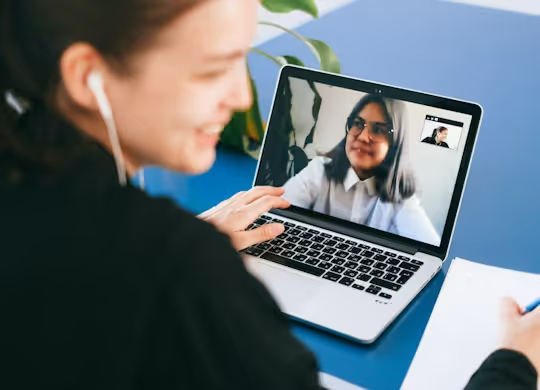The benefits of a blended learning approach
How to create blended learning campaigns to suit every kind of learner

Being an easy way to integrate online and traditional learning, the main advantage of blended learning is that it delivers learning in ways that suit everyone – from people who are used to digital platforms, to people more used to traditional methods of learning. It’s a great way to ensure every learner is actively engaged and upskilling themselves in the way they and your organisation needs.
What is blended learning?
Blended learning is an approach to learning that combines online educational materials with traditional instructor-led methods. It gives employees the opportunity to have more control over the time, place, path and pace of their learning. The theory behind it is simple – if it suits the learner, it improves their learning.
Why blended learning is effective
Your organisation is likely to have both millennials who are more used to digital learning, as well as traditional instructor-based learners. This approach serves both.
While instructor-led learning offers an opportunity for immediate face-to-face feedback, online learning offers personalised, self-paced learning with eLearning components that lend themselves to interactive media. These can include such activities as skill-building, games, videos, tutorials, quizzes and social learning.
All can be accessed from the learner’s homepage in their Learning Management System (LMS) or Learning Experience Platform (LXP) and are accessible from the learner’s smartphone or tablet.
Enabling learning by doing
The blended learning model combines online and offline technologies, allowing instructors to quickly adopt the latest learning trends into the learning programme. It can also provide built-in reporting features in the LMS software for deeper, data-driven insights into the learner’s progress.
For learners, this approach offers the unique opportunity to discuss, model, and practice their new skills in a safe space. It means they’re not just watching or hearing – they’re actually doing. That means greater engagement and improved learning outcomes. By applying the new knowledge shortly after they’ve left their session, learners retain what they’ve learned by using what they’ve learned.
Building effective blended learning programmes
How you bring the benefits of blended learning to life for your organisation very much depends on your organisation. For many organisations, effective practices can consist of any combination of these common learning models:
- Online. This is entirely digital, with little or no instructor interaction, and takes place either before, during or after training. Learners can access content on mobile phones, laptops or tablets.
- Self-directed. Taking place in a completely digital environment, this model is entirely self-directed, with learners free to discover content at the time they need it, and engage with an instructor through chat, email or a message board. It provides a flexible schedule and personalised learning using an LMS or LXP to encourage their own learning.
- Instructor-led. These traditional instructor-led learning sessions - which can be delivered online - are supplemented with blended learning technology, which allows learners to control their own learning pace.
- Broadcasts. THRIVE broadcasts is a brand new tool that gets all your important messages out to employees wherever they're working. It provides L&D teams with the opportunity to create, schedule and manage live events all in one place.
- Interchange. Students move from one learning activity to another, either in a structured learning session directed by an instructor, or online through self-direction.
- Personalised. By learning in an LMS offering blended learning strategies, learners control their learning path and choose what they learn. Mentors can be available to answer questions and provide guidance.
- Gamification. Letting learners play is one of the most effective ways to motivate learners. By using game play elements such as points or levels, people enjoy a little competition and become more motivated to complete your modules.
- Self-blend. This system offers supplementary content – such as webinars, white papers, industry blogs or video tutorials – that help self-motivated learners delve deeper into a subject. To encourage curiosity and growth, a robust LMS can combine diverse content sources under one system.
What are blended learning essentials?
The future of blended learning is vibrant in that it helps solve the growing demand for education and upskilling in a remote or distance learning environment
By giving opportunities to learn where and when a learner wants can also have a profound impact on learning outcomes. Indeed, research findings suggest that the physical environment can have such an impact on learners that it could affect progress by as much as 25%.
So what does blended learning look like now?
In a post-pandemic world, more classroom training will be delivered online. Online events and live broadcasting will be essential LMS functionality to engage people and to provide both the learning and the company information people need.
Social learning - using user-generated content that enables people to learn from one another - will continue to build on the natural ways people learn, on their smartphones and devices, in their own time, through natural curiosity and social connections.
And moving forward, progressive organisations will be looking closer at smarter learning platforms that are able to provide the right content to the right people at the right time.
To find out more about blended learning - including finding a unique blend of approaches that work for you and your organisation - about its effectiveness and implementation, feel free to get in touch with us.

.avif)